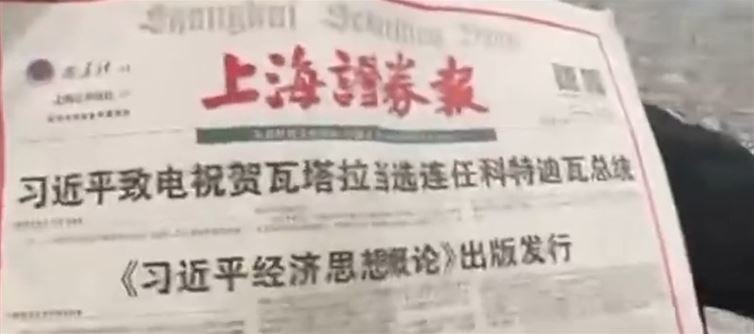
🔥The Rage-Scroll Reveal Nobody Saw Coming
A viral video dared to claim China’s spotless, ad-free newspapers are “superior journalism.” Cute. Except here’s the twist that’ll snap your scroll: those “pure” pages aren’t paragons of media ethics — they’re products of state-funded control, censorship, and narrative engineering designed to erase inconvenient truths. This isn’t an article. This is a demolition of the fantasy that Beijing’s media model is anything but authoritarian PR in newsprint. Buckle up — we’re ripping the curtain off the myth, piece by piece.
1. “Ad-Free” Isn’t A Flex — It’s A red Flag
Chinese newspapers don’t carry ads not because they’re above capitalism, but because the government bankrolls them. Every inch of print flows from state budgets, not public trust.
In contrast, India’s messy, ad-crowded ecosystem? It survives on revenue earned — not scripts handed down from a central office.
2. When the State Is Your Boss, Truth Isn’t Your Beat
In China, the real editor-in-chief isn’t a journalist — it’s the government.
Editorial independence? Gone. Uncomfortable truths? Removed. Critical reporting? Career suicide.
India’s press has flaws, noise, and absurd masala — but it also has survival through dissent. Chaos is freedom in disguise.
3. Cheap Newsprint, Heavy Cost: The economics of Obedience
Chinese newspapers can be dirt cheap because deficits don’t matter — loyalty does.
It’s a system where journalism becomes a state subsidy, not a public service.
True independence is expensive; propaganda is always “affordable.”
4. When Every Headline Is a Celebration, It’s Not news — It’s Narration
Open a Chinese daily and you’ll find polished praise, curated victories, and curated silence.
No scandals. No accountability. No conflict.
India’s press, with all its chaos, still exposes scams, protests, corruption, and disasters. Democracies argue publicly; autocracies pretend perfection.
5. Viral Influencers Aren’t Innocent — They’re Instruments
Those “neutral” influencers praising China’s “efficiency”?
Many are part of a global information playbook — soft propaganda disguised as aesthetic comparison.
Meanwhile, India’s influencers might rant, roast, or hustle — but they’re not repeating state-approved talking points from a foreign capital.
6. The Eraser Effect: When history Disappears on Command
Events like the Tiananmen crackdown aren’t merely absent from Chinese papers — they’re erased from national memory.
The “clean layout” hides a dirtier truth: a media system designed to forget what the state fears.
Indian newspapers, for all their flaws, still hold scars of 1984, Emergency overreach, and modern missteps. Democracies document even their darkest hours.
7. Profit vs Control: The Real Revenue Riddle
China’s newspapers don’t worry about profits, subscribers, or market pressures.
They exist to maintain narratives, not serve readers.
India’s newspapers, fighting for revenue, are forced to evolve, compete, and — occasionally — expose power.
A free press struggles; a controlled press stagnates.
8. The Global Gaslighting Game
Around the world, China’s PR juggernaut positions its media model as “efficient,” “uncluttered,” and “superior.”
What they don’t show: censorship networks, algorithmic suppression, and curated narratives exported through influencer ecosystems.
India’s loud, imperfect press? It resists, rebels, and remains unpredictable — which is precisely why it works.
9. The Coming Storm: More Propaganda, Less Perspective
As state-backed messaging spreads globally, expect more “look how clean China’s newspapers are” content flooding your feed.
The danger isn’t admiration — it’s adoption.
A polished cage is still a cage.
10. Final Verdict: Don’t Confuse Silence With Sophistication
China’s “perfect,” ad-free newspapers aren’t proof of purity; they’re proof of control.
India’s messy, ad-ridden, argumentative media ecosystem? It’s a symptom of freedom.
Democracy is loud, chaotic, flawed — and absolutely necessary.




 click and follow Indiaherald WhatsApp channel
click and follow Indiaherald WhatsApp channel